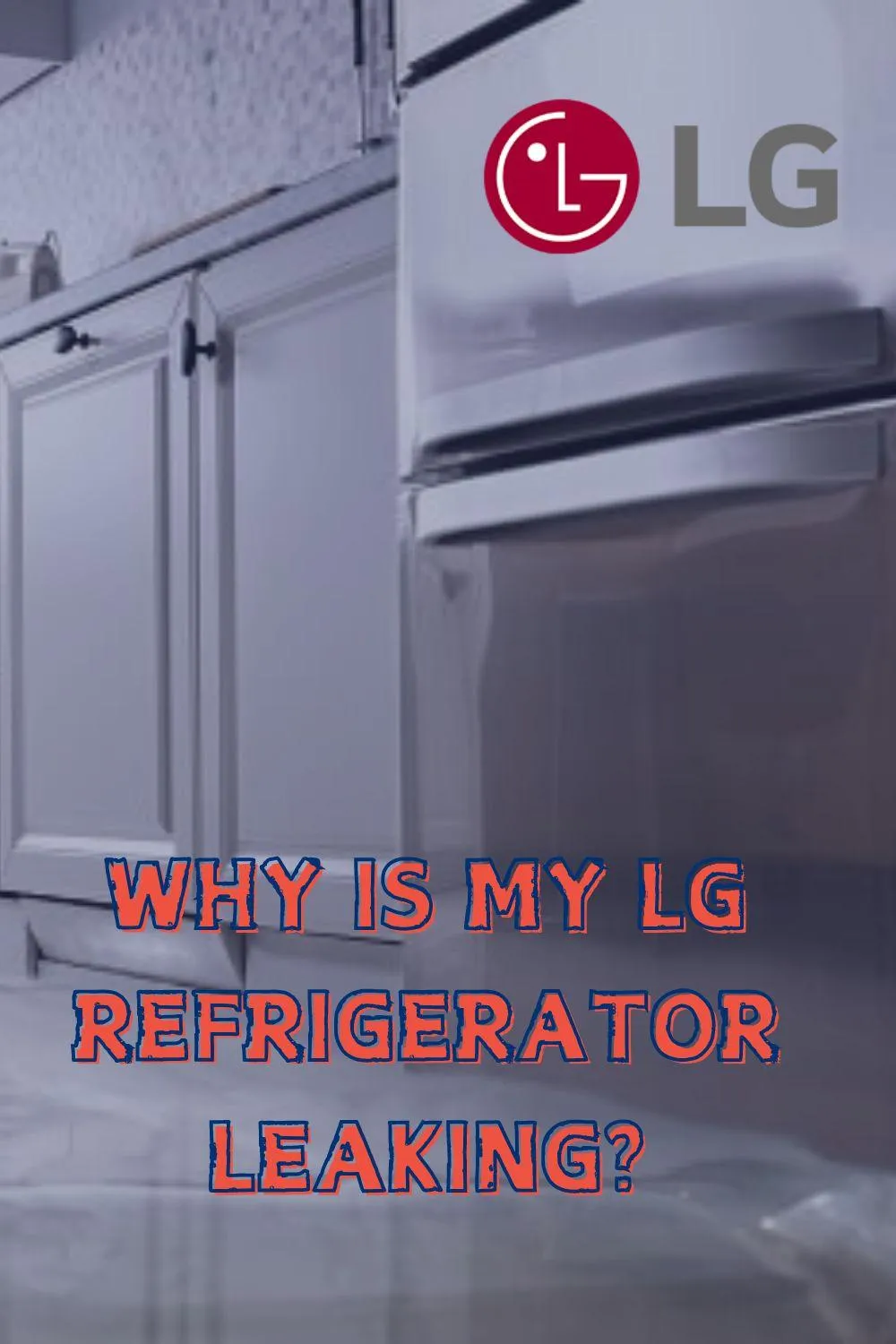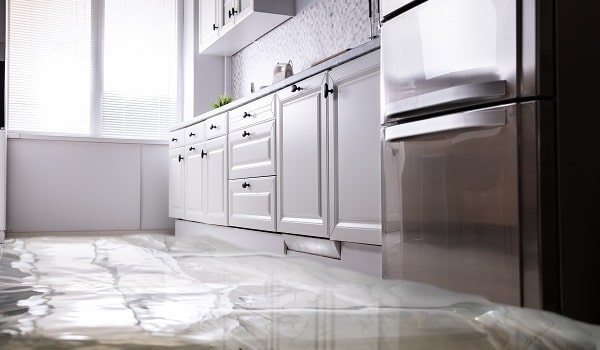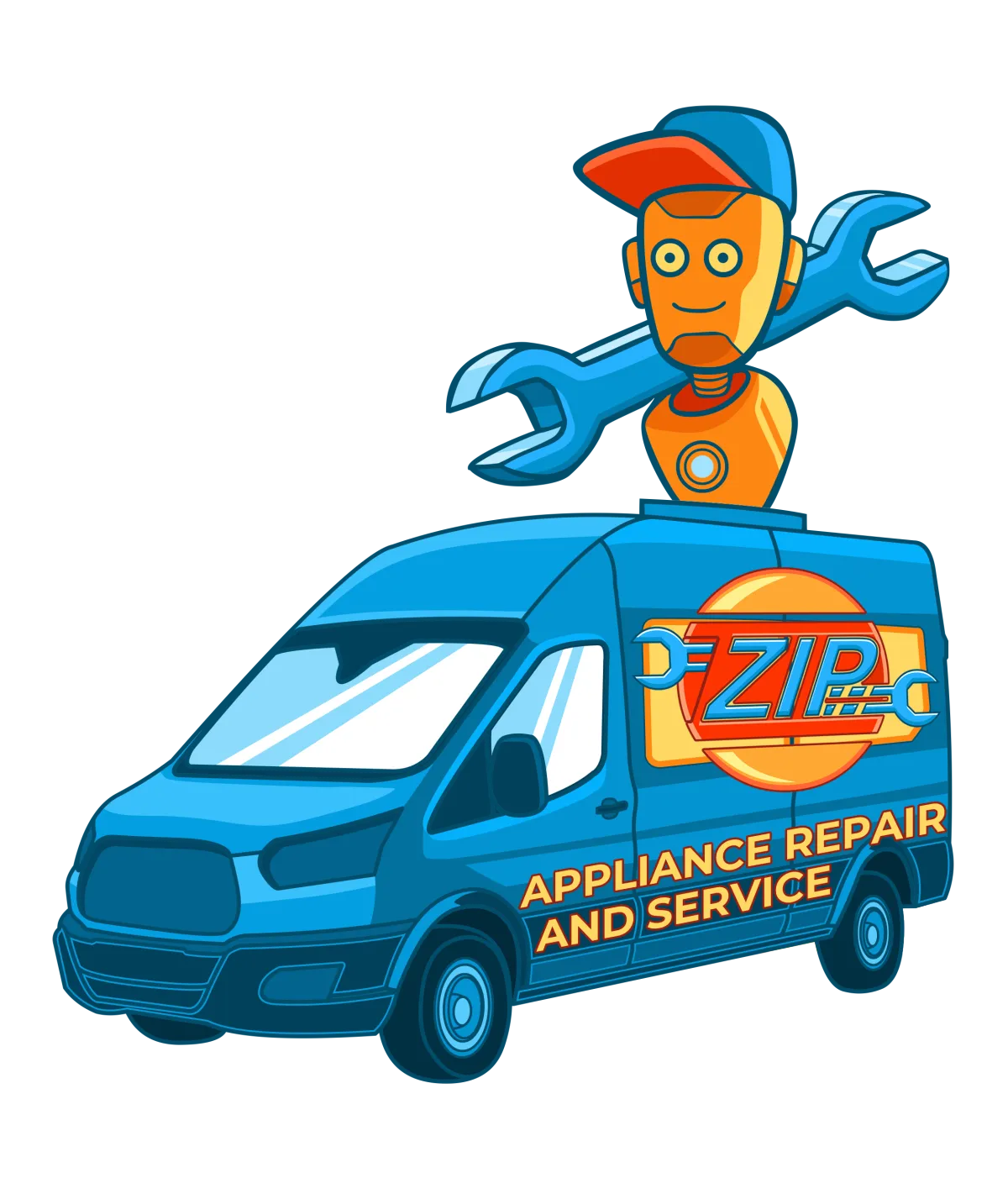THE FASTEST TOOLS IN TOWN
ZIP APPLIANCE REPAIR & SERVICE
Phone: (559) 272-4265
Phone: (559) 272-4265
Appliance Repair Tips For Fresno, CA Residents

LG Refrigerator Leaking? Here's What to Do
"Stop the drip and save your kitchen. Our guide to fixing LG refrigerator leaks is here." - Appliance Boss
Introduction
Understanding LG Refrigerator Water Leaks
A leaky LG refrigerator can be a frustrating and potentially costly issue. Knowing the common causes and effective solutions can help you address the problem promptly and minimize damage.
Common Causes of LG Refrigerator Leaks
Several factors can contribute to LG refrigerator leaks, including:
Faulty water inlet valve: A malfunctioning valve can allow excess water to enter the refrigerator.
Clogged defrost drain: A blocked drain can prevent melted ice from draining properly, leading to water buildup.
Worn-out door seals: Damaged seals can allow moisture to escape the refrigerator, causing leaks.
Dirty condenser coils: Dust and debris can impede the condenser's ability to remove heat, leading to excessive moisture.
Defective water filter: A faulty water filter can cause leaks or reduce the refrigerator's cooling efficiency.

The Importance of Addressing Leaks Promptly
Ignoring a leaky LG refrigerator can lead to serious consequences, such as:
Water damage: Excess moisture can damage flooring, cabinets, and other household items.
Mold and mildew growth: Damp environments can create ideal conditions for mold and mildew, which can pose health risks.
Increased energy consumption: A leaky refrigerator may need to work harder to maintain the desired temperature, leading to higher utility bills.
Identifying the Source of the Leak
Inspecting the Exterior of the Refrigerator
Check for visible water: Look for puddles or drips around the refrigerator's base, sides, or back.
Examine the door seals: Ensure that the door seals are intact and not damaged.
Inspect the drain pan: If your refrigerator has a drain pan, check for water accumulation.
Checking for Water Damage
Look for signs of water damage: This may include warped cabinets, stained floors, or peeling paint.
Check the kitchen ceiling and walls: Look for signs of water stains or discoloration.
Locating the Leak's Origin
Use a flashlight: Shine a flashlight into the refrigerator to look for water sources.
Check the back of the refrigerator: Inspect the water inlet valve, defrost drain, and condenser coils.
Monitor the refrigerator during operation: Observe if the leak occurs when the refrigerator is running or when the door is opened.
Troubleshooting Common Leak Points
Water Inlet Valve: Testing and Replacing
Test the valve: Turn off the water supply to the refrigerator and disconnect the water inlet line. Turn on the water and check for leaks. If the valve is leaking, it needs to be replaced.
Replace the valve: Follow the manufacturer's instructions to replace the water inlet valve.
Defrost Drain: Cleaning and Unclogging
Locate the drain: The defrost drain is usually located at the back of the refrigerator, near the evaporator coils.
Clean the drain: Use a pipe cleaner or a mixture of vinegar and water to remove any clogs or debris.
Door Seals: Checking for Wear and Tear
Inspect the seals: Look for cracks, tears, or gaps in the door seals.
Replace damaged seals: If the seals are damaged, they will need to be replaced to prevent leaks.
Condenser Coils: Cleaning and Inspecting
Access the coils: The condenser coils are usually located at the back or bottom of the refrigerator.
Clean the coils: Use a vacuum cleaner or a soft-bristled brush to remove dust and debris.
Inspect for damage: Check the coils for any signs of damage or corrosion.
Water Filter: Replacing if Necessary
Check the filter's lifespan: Refer to your refrigerator's manual to determine the recommended replacement interval for the water filter.
Replace the filter: Follow the manufacturer's instructions to replace the water filter.
DIY Repair Tips
Simple Fixes You Can Try
Tighten loose connections: Ensure that all connections, such as the water inlet line and drain hose, are securely tightened.
Level the refrigerator: A tilted refrigerator can cause water to leak.
Check for foreign objects: Remove any foreign objects that may be blocking the drain or water inlet valve.
Tightening Loose Connections
Use a wrench or pliers: Gently tighten any loose connections, but do not overtighten.
Cleaning and Replacing Filters
Follow the manufacturer's instructions: Refer to your refrigerator's manual for specific cleaning and replacement procedures.
Use a mild detergent: Clean the filter with a mild detergent solution.
Adjusting Door Alignment
Check the door hinges: Ensure that the door hinges are properly adjusted and that the door closes evenly.
When to Call a Professional
Severe Leaks: If the leak is severe or causing significant water damage, it's best to call a professional.
Complex Issues: If you're unable to identify the source of the leak or if the problem is complex, a professional can diagnose and repair the issue efficiently.
Lack of Expertise: If you're not comfortable attempting repairs yourself, it's advisable to consult a professional.
Preventing Future Leaks
Regular Maintenance
Clean the condenser coils regularly: This will help prevent excessive moisture buildup.
Replace the water filter as recommended:
A clogged or worn-out filter can contribute to leaks.
Check door seals for wear and tear: Replace damaged seals promptly.
Cleaning and Inspection
Clean the refrigerator interior and exterior regularly: This will help prevent mold and mildew growth.
Inspect the refrigerator for signs of leaks: Check for water stains or puddles.
Avoiding Overloading
Avoid overloading the refrigerator: Overloading can hinder airflow and contribute to moisture buildup.
Proper Installation
Ensure proper installation: A refrigerator that is not installed correctly may be more prone to leaks.
Common LG Refrigerator Models with Leak Issues
While any LG refrigerator model can experience leaks, some models may be more susceptible to certain issues. It's helpful to research specific models and look for common complaints or known problems.
Cost of Repairing an LG Refrigerator Leak
The cost of repairing an LG refrigerator leak can vary depending on the severity of the problem, the parts needed, and the labor costs. Factors that can affect the cost include:
The location of the leak: Leaks in hard-to-reach areas may require more labor-intensive repairs.
The cause of the leak: Some causes, such as a faulty water inlet valve or compressor, may be more expensive to repair.
The age of the refrigerator: Older refrigerators may require more extensive repairs.
It's essential to obtain quotes from multiple repair services to compare prices and find the best deal.
LG Refrigerator Warranty Coverage
Understanding Your Warranty
Review your refrigerator's warranty documentation to determine what is covered.
Some warranties may cover leaks caused by manufacturing defects or material failures.
Filing a Warranty Claim
If your refrigerator is still under warranty, contact LG customer support to file a claim.
Be prepared to provide information about the model number, purchase date, and the nature of the problem.
Out-of-Warranty Repairs
If your refrigerator is no longer under warranty, you will be responsible for the repair costs.
Additional Resources
LG Customer Support Contact Information
LG website: https://www.lg.com/us/support/contact
Phone number: [Insert LG customer service phone number]
Online Forums and Communities
LG owner forums: Connect with other LG refrigerator owners and seek advice.
Online appliance repair forums: Get tips and recommendations from experienced professionals.
Professional Repair Services
Local appliance repair companies: Research and compare local repair services to find a reputable company.
Online marketplaces: Look for qualified repair technicians in your area.
Conclusion
Recap of Key Points
Identifying the source of a refrigerator leak is essential for effective repairs.
Common causes of leaks include faulty valves, clogged drains, and worn-out seals.
Regular maintenance and cleaning can help prevent leaks.
For severe or complex leaks, it's advisable to consult a professional.
The Importance of Addressing Leaks Promptly
Ignoring a leaky refrigerator can lead to water damage, mold growth, and increased energy consumption. It's crucial to address leaks promptly to prevent further problems.
Choosing the Right Repair Option
Whether you choose to attempt DIY repairs or hire a professional, it's important to select the most appropriate solution based on the severity of the leak and your level of expertise. By following the tips and advice in this guide, you can effectively address LG refrigerator leaks and maintain a functional and efficient kitchen.
For expert refrigerator repair services in Fresno, California, contact Zip Appliance Repair and Service. Our experienced technicians can diagnose and repair your leaky LG refrigerator efficiently and effectively.
Visit our website at fresno.ziprepairservice.com or call us at (559) 272-4265 to schedule a repair.

LG Refrigerator Leaking? Here's What to Do
"Stop the drip and save your kitchen. Our guide to fixing LG refrigerator leaks is here." - Appliance Boss
Introduction
Understanding LG Refrigerator Water Leaks
A leaky LG refrigerator can be a frustrating and potentially costly issue. Knowing the common causes and effective solutions can help you address the problem promptly and minimize damage.
Common Causes of LG Refrigerator Leaks
Several factors can contribute to LG refrigerator leaks, including:
Faulty water inlet valve: A malfunctioning valve can allow excess water to enter the refrigerator.
Clogged defrost drain: A blocked drain can prevent melted ice from draining properly, leading to water buildup.
Worn-out door seals: Damaged seals can allow moisture to escape the refrigerator, causing leaks.
Dirty condenser coils: Dust and debris can impede the condenser's ability to remove heat, leading to excessive moisture.
Defective water filter: A faulty water filter can cause leaks or reduce the refrigerator's cooling efficiency.

The Importance of Addressing Leaks Promptly
Ignoring a leaky LG refrigerator can lead to serious consequences, such as:
Water damage: Excess moisture can damage flooring, cabinets, and other household items.
Mold and mildew growth: Damp environments can create ideal conditions for mold and mildew, which can pose health risks.
Increased energy consumption: A leaky refrigerator may need to work harder to maintain the desired temperature, leading to higher utility bills.
Identifying the Source of the Leak
Inspecting the Exterior of the Refrigerator
Check for visible water: Look for puddles or drips around the refrigerator's base, sides, or back.
Examine the door seals: Ensure that the door seals are intact and not damaged.
Inspect the drain pan: If your refrigerator has a drain pan, check for water accumulation.
Checking for Water Damage
Look for signs of water damage: This may include warped cabinets, stained floors, or peeling paint.
Check the kitchen ceiling and walls: Look for signs of water stains or discoloration.
Locating the Leak's Origin
Use a flashlight: Shine a flashlight into the refrigerator to look for water sources.
Check the back of the refrigerator: Inspect the water inlet valve, defrost drain, and condenser coils.
Monitor the refrigerator during operation: Observe if the leak occurs when the refrigerator is running or when the door is opened.
Troubleshooting Common Leak Points
Water Inlet Valve: Testing and Replacing
Test the valve: Turn off the water supply to the refrigerator and disconnect the water inlet line. Turn on the water and check for leaks. If the valve is leaking, it needs to be replaced.
Replace the valve: Follow the manufacturer's instructions to replace the water inlet valve.
Defrost Drain: Cleaning and Unclogging
Locate the drain: The defrost drain is usually located at the back of the refrigerator, near the evaporator coils.
Clean the drain: Use a pipe cleaner or a mixture of vinegar and water to remove any clogs or debris.
Door Seals: Checking for Wear and Tear
Inspect the seals: Look for cracks, tears, or gaps in the door seals.
Replace damaged seals: If the seals are damaged, they will need to be replaced to prevent leaks.
Condenser Coils: Cleaning and Inspecting
Access the coils: The condenser coils are usually located at the back or bottom of the refrigerator.
Clean the coils: Use a vacuum cleaner or a soft-bristled brush to remove dust and debris.
Inspect for damage: Check the coils for any signs of damage or corrosion.
Water Filter: Replacing if Necessary
Check the filter's lifespan: Refer to your refrigerator's manual to determine the recommended replacement interval for the water filter.
Replace the filter: Follow the manufacturer's instructions to replace the water filter.
DIY Repair Tips
Simple Fixes You Can Try
Tighten loose connections: Ensure that all connections, such as the water inlet line and drain hose, are securely tightened.
Level the refrigerator: A tilted refrigerator can cause water to leak.
Check for foreign objects: Remove any foreign objects that may be blocking the drain or water inlet valve.
Tightening Loose Connections
Use a wrench or pliers: Gently tighten any loose connections, but do not overtighten.
Cleaning and Replacing Filters
Follow the manufacturer's instructions: Refer to your refrigerator's manual for specific cleaning and replacement procedures.
Use a mild detergent: Clean the filter with a mild detergent solution.
Adjusting Door Alignment
Check the door hinges: Ensure that the door hinges are properly adjusted and that the door closes evenly.
When to Call a Professional
Severe Leaks: If the leak is severe or causing significant water damage, it's best to call a professional.
Complex Issues: If you're unable to identify the source of the leak or if the problem is complex, a professional can diagnose and repair the issue efficiently.
Lack of Expertise: If you're not comfortable attempting repairs yourself, it's advisable to consult a professional.
Preventing Future Leaks
Regular Maintenance
Clean the condenser coils regularly: This will help prevent excessive moisture buildup.
Replace the water filter as recommended:
A clogged or worn-out filter can contribute to leaks.
Check door seals for wear and tear: Replace damaged seals promptly.
Cleaning and Inspection
Clean the refrigerator interior and exterior regularly: This will help prevent mold and mildew growth.
Inspect the refrigerator for signs of leaks: Check for water stains or puddles.
Avoiding Overloading
Avoid overloading the refrigerator: Overloading can hinder airflow and contribute to moisture buildup.
Proper Installation
Ensure proper installation: A refrigerator that is not installed correctly may be more prone to leaks.
Common LG Refrigerator Models with Leak Issues
While any LG refrigerator model can experience leaks, some models may be more susceptible to certain issues. It's helpful to research specific models and look for common complaints or known problems.
Cost of Repairing an LG Refrigerator Leak
The cost of repairing an LG refrigerator leak can vary depending on the severity of the problem, the parts needed, and the labor costs. Factors that can affect the cost include:
The location of the leak: Leaks in hard-to-reach areas may require more labor-intensive repairs.
The cause of the leak: Some causes, such as a faulty water inlet valve or compressor, may be more expensive to repair.
The age of the refrigerator: Older refrigerators may require more extensive repairs.
It's essential to obtain quotes from multiple repair services to compare prices and find the best deal.
LG Refrigerator Warranty Coverage
Understanding Your Warranty
Review your refrigerator's warranty documentation to determine what is covered.
Some warranties may cover leaks caused by manufacturing defects or material failures.
Filing a Warranty Claim
If your refrigerator is still under warranty, contact LG customer support to file a claim.
Be prepared to provide information about the model number, purchase date, and the nature of the problem.
Out-of-Warranty Repairs
If your refrigerator is no longer under warranty, you will be responsible for the repair costs.
Additional Resources
LG Customer Support Contact Information
LG website: https://www.lg.com/us/support/contact
Phone number: [Insert LG customer service phone number]
Online Forums and Communities
LG owner forums: Connect with other LG refrigerator owners and seek advice.
Online appliance repair forums: Get tips and recommendations from experienced professionals.
Professional Repair Services
Local appliance repair companies: Research and compare local repair services to find a reputable company.
Online marketplaces: Look for qualified repair technicians in your area.
Conclusion
Recap of Key Points
Identifying the source of a refrigerator leak is essential for effective repairs.
Common causes of leaks include faulty valves, clogged drains, and worn-out seals.
Regular maintenance and cleaning can help prevent leaks.
For severe or complex leaks, it's advisable to consult a professional.
The Importance of Addressing Leaks Promptly
Ignoring a leaky refrigerator can lead to water damage, mold growth, and increased energy consumption. It's crucial to address leaks promptly to prevent further problems.
Choosing the Right Repair Option
Whether you choose to attempt DIY repairs or hire a professional, it's important to select the most appropriate solution based on the severity of the leak and your level of expertise. By following the tips and advice in this guide, you can effectively address LG refrigerator leaks and maintain a functional and efficient kitchen.
For expert refrigerator repair services in Fresno, California, contact Zip Appliance Repair and Service. Our experienced technicians can diagnose and repair your leaky LG refrigerator efficiently and effectively.
Visit our website at fresno.ziprepairservice.com or call us at (559) 272-4265 to schedule a repair.
If your dryer has been giving you problems, contact Zip Appliance Repair & Service at (559) 272-4265

Appliance Repair In A Zip
If you need a dryer repair call our Team at (559) 272-4265, or visit our online scheduling page to request service.
Appliance Repair
HAVE A QUESTION, CALL (559) 272-4265

Online Offers
Take advantage of our online discount offers - save time and money...

Residential & Commercial appliances
See what our company can do for you

Appliance Repair Tips
If your appliance is not working properly...

1405 Commercial Way ste 100
Bakersfield, CA 93309
Lic # 1116346
Equipment We Sevice
- A Call To Confirm Your Appointment Time
- A Email Detailing Your Assigned Technician
- Information Needed Before The Repair Can Be Started
- An Estimate Of Work To Be Done
© 2024 ZIP APPLIANCE REPAIR & SERVICE LLC







